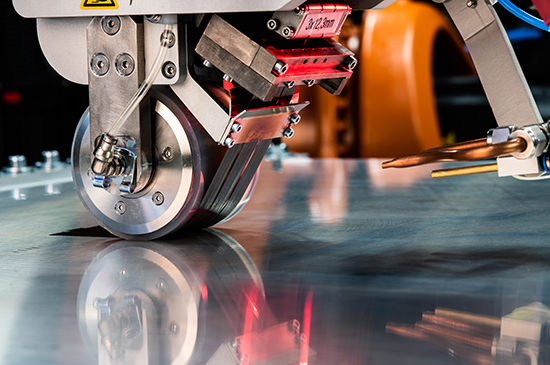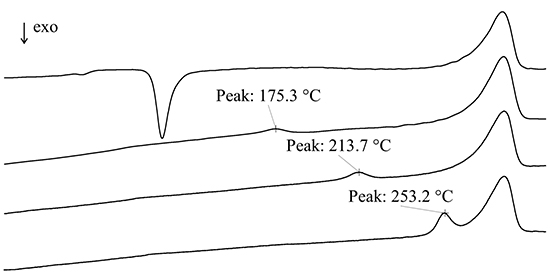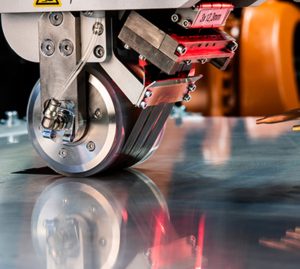Through in situ manufacturing and post-manufacturing tempering: Mechanical characterisation
Thermoplastic composite structures are gradually gaining prominence in the aerospace industry owing to their weight reduction capabilities, among other advantages. However, the current challenge is how to meet the rising demand for these composites cost-effectively. Among the existing thermoplastic manufacturing methods, automated fiber placement (AFP) has drawn significant research attention as a cost-effective approach for commercial production of thermoplastic composites. This requires a properly developed AFP technology for the process chain, which is yet to come into existence. Besides size and improved production rates, thermoplastic composites must meet thresholds of mechanical property requirements to merit aerospace application as an alternative to metallic parts. Unlike thermosets that rely on automated layups and subsequent autoclave finishing to achieve the required strength, similar autoclave activities applied to thermoplastics require significantly higher investment costs, making them economically unattractive. This leaves in-situ manufacturing as the most prospective and viable method for pursuing the desired mechanical properties within an acceptable price range.
While the benefits of the in-situ manufacturing approach are obvious, it requires proper handling of the polymer matrix, which is also responsible for determining the consolidation viability of the plies utilized to manufacture the final parts. Therefore, ensuring appropriate consolidation alongside crystallinity presents another key challenge of AFP manufacturing. Poor consolidation induces delamination in finished parts, while a low degree of crystallinity can lead to poor chemical resistance and inadequate stiffness. Furthermore, while autoclave processes are time-intensive (hours or days), the contact time between the compaction roller and polymer in most commercial AFP processes is between 0.1 – 0.3 seconds. Notably, the time must be fixed for commercial competitiveness. Therefore, developing an effective and robust method for realizing the desirable mechanical properties of the final part is highly desirable.
On this account, Dr. Ashley Chadwick, Dr. Karola Kotzur and Mr. Sebastian Nowotny from the German Aerospace Center (DLR) investigated the possibility of enhancing the mechanical performance and crystallinity of carbon fiber reinforced PPS (CF-PPS) thermoplastic composite laminates via AFP in-situ manufacturing and post-manufacturing tempering. Mechanical tests were performed to study the tempering effects on the sensitivity of the CF-PPS thermoplastic composites to AFP process parameters in a differential scanning calorimetry (DSC) environment. Moreover, thermal analysis of the material which acted as the reference was carried out in detail to aid the prediction of the optimal tooling temperature required to achieve the maximum strength. Their work is currently published in the research journal, Composites Part A.
Results demonstrated that exposing the samples to higher temperatures above the crystallization temperature produced secondary crystallinity. These secondary crystalline structures dominated the polymer-inherent crystallinity of the material as the tempering conditions approached the melting temperature of the polymer matrix. In fact, it accounted for more than 70% of the total crystallinity at the maximum tested temperature of 260 °C. The resulting laminates exhibited a remarkable improvement in both perpendicular tensile and inter-laminar shear properties with increasing temperature. Furthermore, tempering was capable of increasing the tensile strength of the polymer by up to 32%.
In summary, the DLR research team investigated and correlated the mechanical and thermal properties of CFRP laminates manufactured by heated tools followed by exposure to tempering cycles. Based on the results, the tool should be maintained at a temperature above the cold crystallization temperature to enhance the performance of the final structure. Generally, materials produced at higher temperatures displayed improved mechanical performance over those produced at lower heating temperatures. This indicated the importance of laminate homogeneity before tempering. In a statement to Advances in Engineering, the authors said they hope their study will contribute to developing high-performing AFP tooling for large-scale manufacturing of much-needed fiber-reinforced thermoplastic structures for various applications.


Ashley Robert Chadwick, PhD
Dr. Chadwick received his PhD from the University of Adelaide (Australia) in 2017. The majority of his research career has been spent in Germany at the Institute for Space Systems (IRS) and the German Aerospace Center (DLR) conducting investigations into applied plasma physics and advanced manufacturing of carbon-fiber composite structures, respectively. Dr. Chadwick has published several works on diverse topics and remains active in supervising and supporting PhD students in their own investigations.
His research interests are the manufacturability of advanced composite structures for aircraft and spacecraft, developing diagnostics to extract novel information from experimental setups, and the use of plasma discharges within aerospace and terrestrial applications.
Sebastian Nowotny
After graduating from the University of Stuttgart in Aerospace Engineering (Dipl.-Ing.) in 2005, Mr. Nowotny joined the Institute of Structures and Design at the German Aerospace Center (DLR). His main research focus is on the advancement of performance of lightweight structures by combining novel manufacturing processes with adapted design solutions. Mr. Nowotny has worked on preforming processes and resin infusion technologies for large composite structures for aircrafts and spacecrafts as well as thermoplastic joining and manufacturing technologies. He became the head of the Component Design and Manufacturing Technologies department at the institute in 2016 and continues to guide its contributions to the field of composites today.
Reference
Chadwick, A., Kotzur, K., & Nowotny, S. (2021). Moderation of thermoplastic composite crystallinity and mechanical properties through in situ manufacturing and post-manufacturing tempering: Part 1 – Mechanical characterisation. Composites Part A: Applied Science and Manufacturing, 143, 106286.





